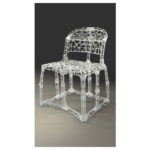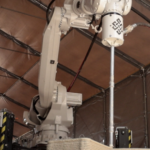Researchers have developed a new method to 3D print luminescent quantum dot-polymer architectures, unlocking potential applications in advanced optoelectronics.
Quantum dots, particularly those made from organic-inorganic hybrid perovskite materials, offer exceptional properties like color tunability and high quantum yields. However, their sensitivity to heat and oxygen has posed challenges in harnessing their capabilities.

Traditional 2D patterning techniques have limited device performance, while melting-based 3D printing processes degrade quantum dots. The new approach, utilizing direct ink writing at room temperature, overcomes these hurdles. By encapsulating perovskite quantum dots in a hydroxypropyl cellulose polymer matrix, stability against external factors is enhanced, enabling precise 3D printing of complex structures.
The method not only facilitates the creation of intricate 3D objects with fine-tuned emissive properties but also demonstrates potential applications in anti-counterfeiting and information encryption. The versatility of this approach opens doors for next-generation optoelectronic devices, promising increased surface area, tunable photonic properties, and compact device integration.
Future research directions include optimizing polymer matrix stability and quantum dot performance, as well as incorporating conductive fillers for applications in light-emitting diodes and solar cells. This advancement signifies a significant leap towards leveraging the full potential of quantum dot composites, paving the way for transformative advancements in various technologies.
Source: nanowerk.com
Come and let us know your thoughts on our Facebook, X, and LinkedIn pages, and don’t forget to sign up for our weekly additive manufacturing newsletter to get all the latest stories delivered right to your inbox.









